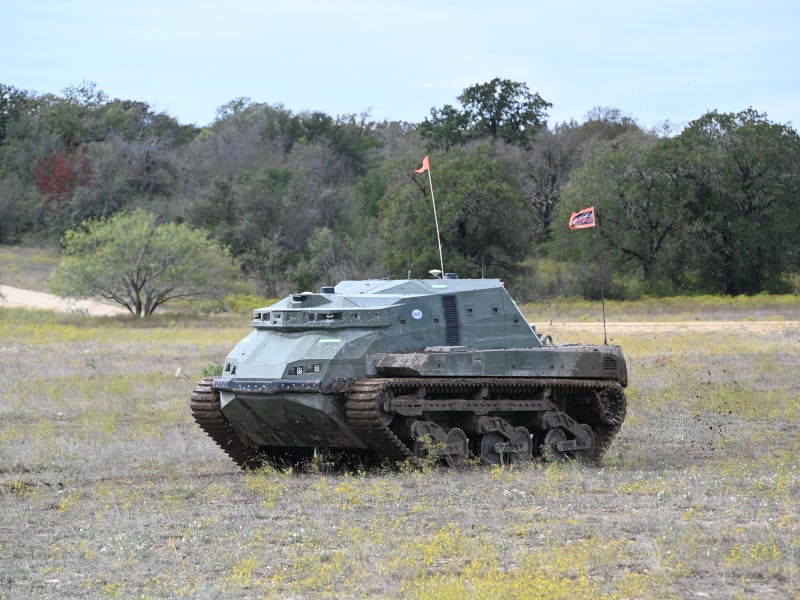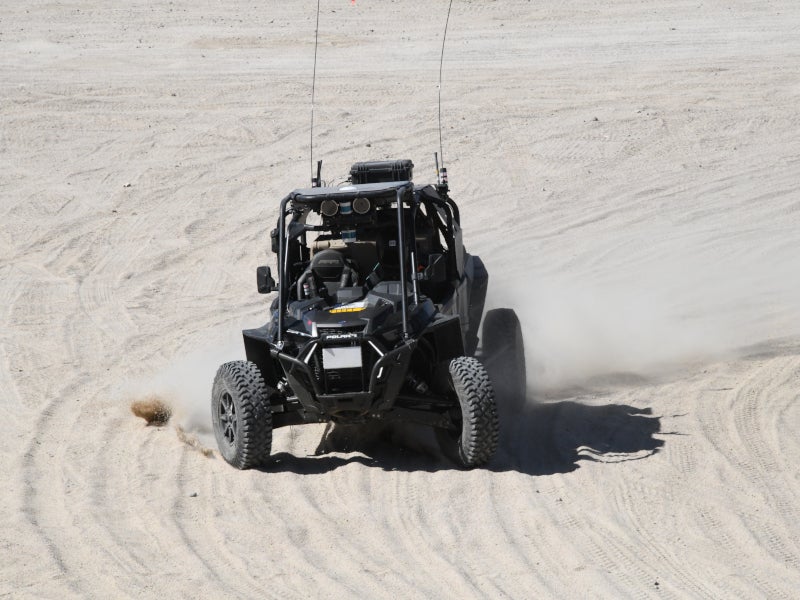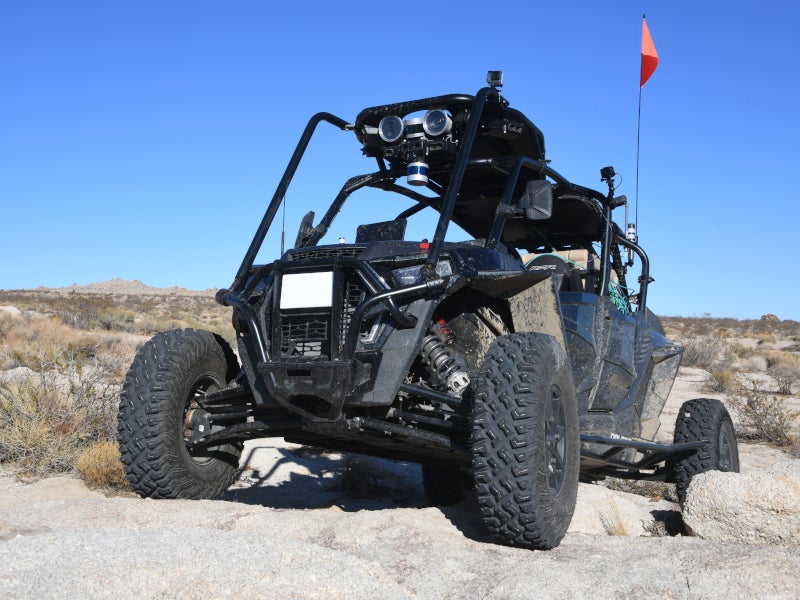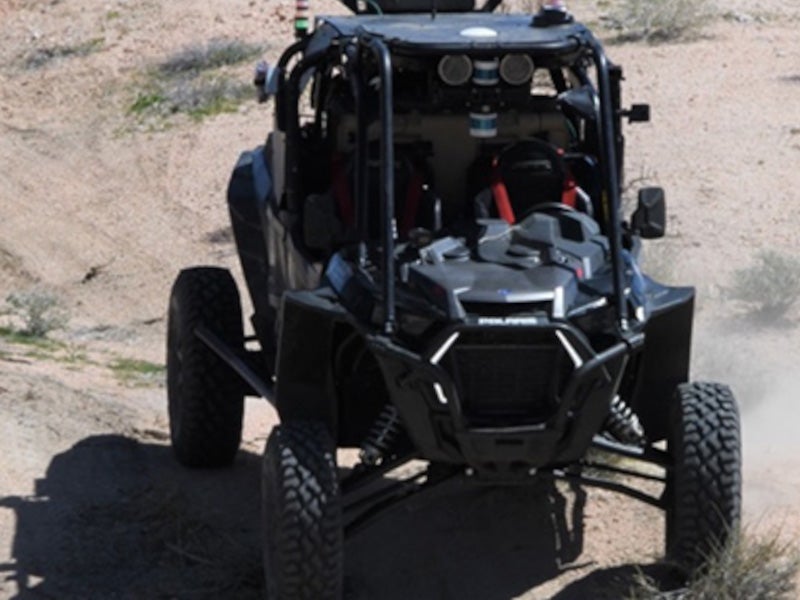The Robotic Autonomy in Complex Environments with Resiliency (RACER) programme is undertaken by the Defense Advanced Research Projects Agency (DARPA), a US research and development agency, to create and demonstrate new autonomy algorithms for uncrewed ground vehicles (UGVs).
The RACER programme was announced by DARPA in July 2020 to develop new technologies that maximise the utilisation of sensor and mechanical capabilities in UGVs.
The development of military off-road autonomy has been challenging due to the complexity of off-road terrain and the need to traverse it at high speeds.
RACER aims to exhibit groundbreaking autonomous UGV mobility, prioritising speed and durability, through a combination of simulation and advanced platforms.
It will evaluate algorithms in real-world scenarios during DARPA-hosted experiments held nationwide, encompassing diverse terrains.
The RACER programme successfully tested autonomous movement using a new, significantly larger fleet vehicle in April 2024.
RACER programme robotic fleet design and features
A fleet of robotic vehicles is being developed for testing purposes, including the RACER Heavy Platform (RHP) vehicles and RACER Fleet Vehicles (RFVs).
The RHPs are 20ft long and weigh 12t. The skid-steer-tracked vehicles resemble the upcoming robotic and optionally crewed combat/fighting vehicles in size.
The RHP uses the Textron M5 base platform, which was originally developed and used by the US Army for robotic combat vehicle needs. It is now upgraded and backed for RACER autonomy integration by Carnegie Robotics, an autonomous technology solutions provider.
The RFVs have a full 360º range and use various image sensing technologies and computation abilities, including multiple light detection and ranging (LIDARs), stereo camera pairs, colour and infrared cameras, radio detection and ranging (RADARs), event sensors, and inertial measurement sensors.
The vehicles are outfitted with computation tools that are housed within a specialised electronics box (E-Box) designed to withstand the rigorous demands of DARPA’s high-speed, off-road RACER tests.
The E-Box houses multiple top-tier graphical processing units (GPUs) in a setup that ensures environmental protection, shock/vibration resistance, and effective thermal management.
The sensor paired with the E-box was able to gather four terabytes of sensor data every hour during testing, which is crucial for powering artificial intelligence (AI) and machine learning (ML) algorithms and supporting the sophisticated stack approaches necessary for executing rapid combat manoeuvres in intricate terrains.
Each RFV includes upgrades for roll protection, integrating sensors/E-box, enabling autonomous control, and boosting power by 7kW.
Four RFVs were completed by November 2021 and three were delivered to RACER phase one performers. Four additional RFVs were provided before DARPA’s inaugural RACER-hosted field experiment in March 2022 at the National Training Center (NTC) in Fort Irwin, California.
RACER programme teams
Three teams were chosen to start testing and development for the RACER programme in October 2021.
One of the teams is the Differential Everything for Adaptive Driving (D.E.A.D.) Fast team, which includes Airlab, Carnegie Mellon University’s National Robotics Engineering Center (NREC), and the University of Rochester.
The University of Washington (UW) team, including the Paul G Allen School of Computer Science and Engineering and Applied Physics Lab, is the second team while Networked Belief-aware Perceptual Autonomy (NeBula) from Nasa’s Jet Propulsion Laboratory (JPL) is the third team.
In November 2021, the chosen teams were granted the first DARPA-supplied RFVs, which advanced all-terrain vehicles equipped with top-tier sensing and computational capabilities.
RACER phase two involves two teams, including the University of Washington and Overland AI; and JPL, Offroad Autonomy, Georgia Institute of Technology, and Duality Robotics, a provider of digital twin simulation solutions.
UW was awarded a $10.41m contract for the RACER phase two programme in October 2023.
RACER phase one details
In the first phase of DARPA’s RACER programme, teams were challenged to build and design autonomous off-road systems capable of matching the pace of traditional military vehicles in challenging terrain.
The first experiment in phase one involving RFVs was conducted on combat-relevant terrain across six courses between March and April 2022.
The teams conducted more than 40 autonomous runs, each spanning 3.21km and achieving speeds of up to 32.1km per hour (km/h).
The landscape at Fort Irwin presented various challenges, including rocks, bushes, ditches, and more, ranging from severe hazards capable of causing significant damage to vehicles to minor impediments posing a limited risk of damage.
In March 2023, DARPA tested the RFVs for the first time without anyone inside, but with a safety operator in a chase vehicle nearby.
The RACER programme carried out its third experiment, evaluating the capabilities of off-road uncrewed vehicles in November 2023.
The various courses took place in the rugged and demanding landscape of the Mojave Desert at the US Army’s NTC in Fort Irwin.
More than 55 autonomous runs spanning distances ranging between 6.43km and 17.7km each were conducted on RFVs, with speeds reaching approximately 40.2km/h.
The performers travelled 395.8km in 24.6 hours with a fleet of 12 RFVs.
RACER programme phase two
The second phase of RACER focuses on advancing software stacks and evaluating autonomy across extended off-road courses with reduced interventions. The participating teams will be tasked with transferring their autonomy solutions onto large-scale demonstration platforms, representative of combat-scale vehicles. Additionally, they will be required to double the speeds compared to the performance metrics established in the first phase.
Phase two commenced with its fourth experiment (E4) in late 2023 involving the initial testing of RHPs and evaluations of RFVs by teams from UW and JPL in Texas’ military training grounds.
Utilising fully unmanned RFVs, RACER successfully demonstrated autonomous movement within a 418 million square feet (38 million square metres) terrain area. Successful nighttime runs demonstrated adaptability, achieving equivalent performance results.
Furthermore, the RACER programme tested the RHP by operating autonomously for more than 48.2km in route-following mode across similarly complex terrain to test low-level autonomous control, gather sensor data sets, evaluate mobility, and enhance operational refinement.
E4 also included the software development of RACER global planning, incorporating tactics, and conducting focus groups with subject matter experts stationed at the E4 military base to refine tactical reasoning inputs.
Two more experiments are planned to be undertaken in 2024 to maintain DARPA’s planned biannual cadence of field tests, ensuring continuous improvement of robots. Meanwhile, the phase two teams will continue development and testing at various test sites situated in proximity to each team.
Contractors involved
The RACER programme granted two contracts to create simulation environments and tools for developing off-road autonomy algorithms.
The primary contractors for the RACER-Simulation (SIM) part of the programme are Duality Robotics and Intel Federal, a technical solutions provider for the US Government. RACER-SIM will enhance existing simulation capabilities and physics-based models to facilitate the testing of off-road autonomy within virtual settings.
DARPA granted Intel Federal the task of designing simulation solutions for off-road autonomous ground vehicles in April 2022 in collaboration with Intel Labs and partners, including Computer Vision Center, a non-profit organisation, and the University of Texas.
In phase two, Intel Labs agreed to collaborate with RACER partners to expedite research and development by integrating novel algorithms without depending on a physical robot.





